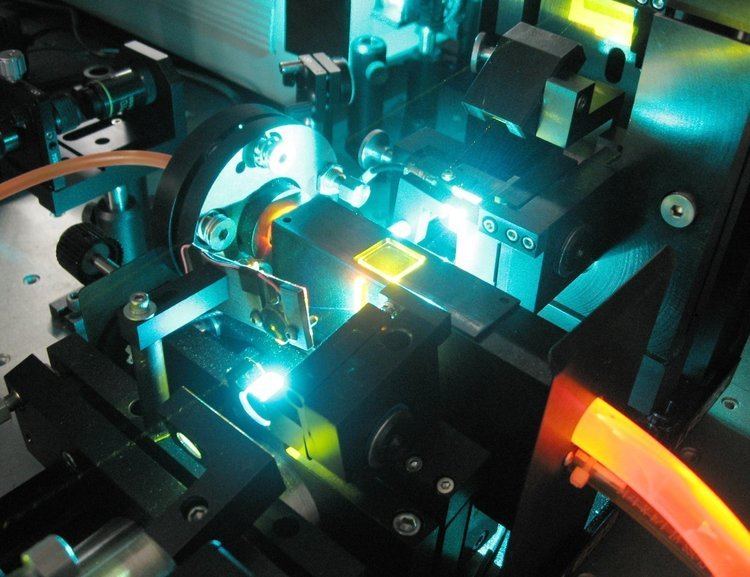 | ||
Laser dyes are large organic molecules with molecular weights of a few hundred mu. When one of these organic molecules is dissolved in a suitable liquid solvent (such as ethanol, methanol, or an ethanol-water mixture) it can be used as laser medium in a dye laser. Laser dye solutions absorb at shorter wavelengths and emit at longer wavelengths. Successful laser dyes include the coumarins and the rhodamines. Coumarin dyes emit in the green region of the spectrum while rhodamine dyes are used for emission in the yellow-red. The color emitted by the laser dyes depend upon the surrounding medium i.e.the medium in which they are dissolved. However, there are dozens of laser dyes that can be used to span continuously the emission spectrum from the near ultraviolet to the near infrared.
Laser dyes are also used to dope solid-state matrices, such as poly(methyl methacrylate) (PMMA), and ORMOSILs, to provide gain media for solid state dye lasers.
